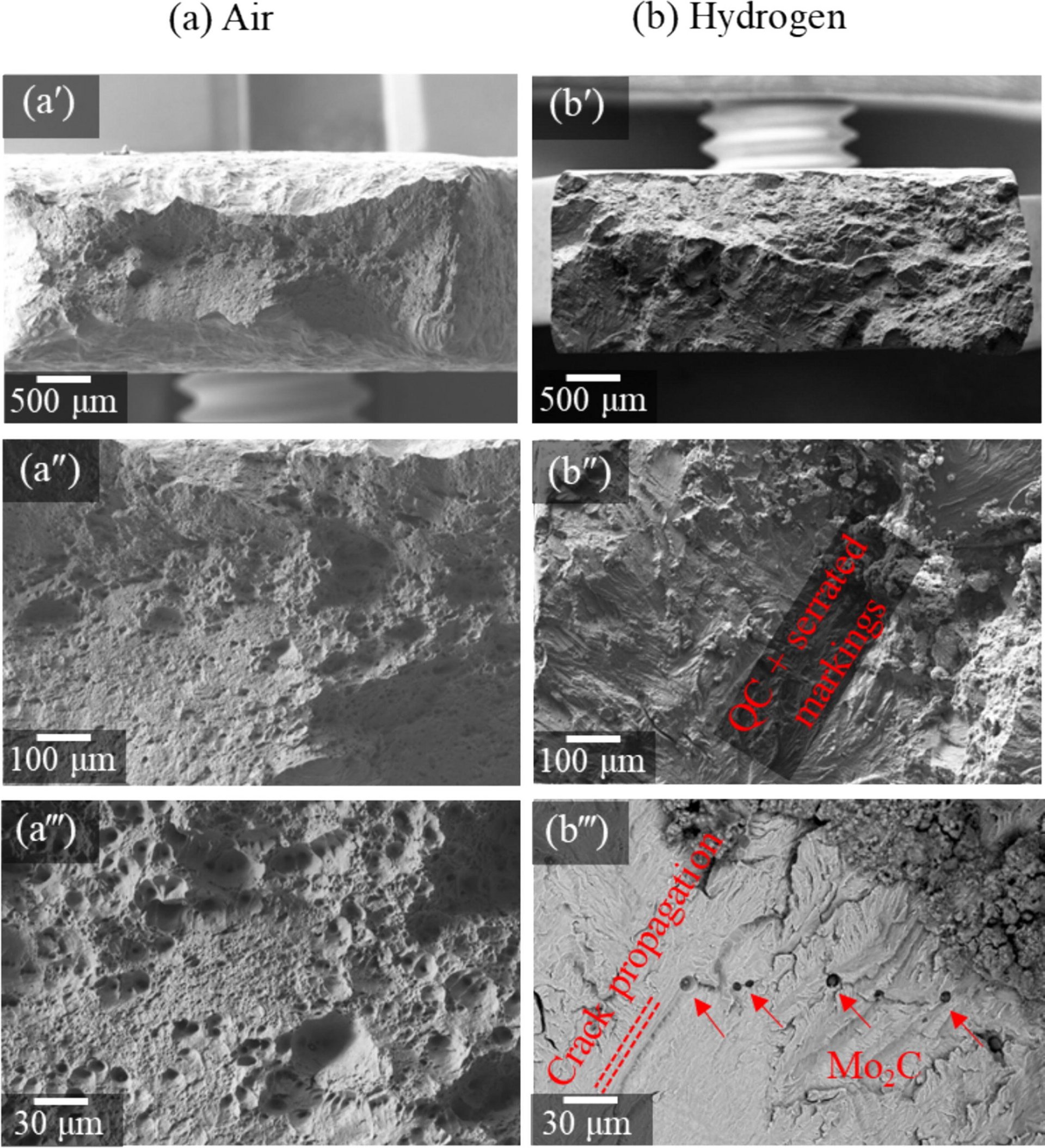- Title: Effect of hydrogen trapping capacity on H-induced crack initiation and propagation mechanisms in martensitic steels: Experimental critical local hydrogen amount theory
- Authors: Mahdieh Safyari, Saurabh Bhosale, Masoud Moshtaghi
Abstract:
Low-carbon martensitic steels are candidate materials for different hydrogen applications. Hydrogen embrittlement (HE) of the steels can be mitigated by designing trap site characteristics. In this study, the different capacities of hydrogen trapping, and reversibility of the trap sites are studied to reveal the extent of HE susceptibility of the steels and H-induced crack initiation and propagation mechanisms. The trap sites in Ti-contained and Mo-contained martensitic steels were identified and discussed. The trap sites in Ti-contained martensitic steel include basic martensitic microstructure, the interface of the TiC/matrix interface and carbon vacancies inside the TiC carbides. The trap sites in Mo contained martensitic steel including basic martensitic microstructure and interface of the Mo2C/matrix interface. Ti-contained steel indicates a mitigated HE susceptibility, controlled by carbon vacancies inside TiC acting as strong hydrogen trap sites, and a higher possibility of building up a critical hydrogen content at Mo2C carbide due to lower hydrogen capacity. These results prove that hydrogen trapping capacity at the designated hydrogen trap sites is a determinant factor for H-induced crack initiation and propagation in martensitic steels. A critical local hydrogen amount should be built up at the trap site to assist the crack to develop. It was also revealed that crack initiation originated from Mo2C carbides accompanied by interfacial decohesion at the interface of martensitic matrix/Mo2C carbides and propagated in quasi-cleavage patterns along {0 1 1} planes.

